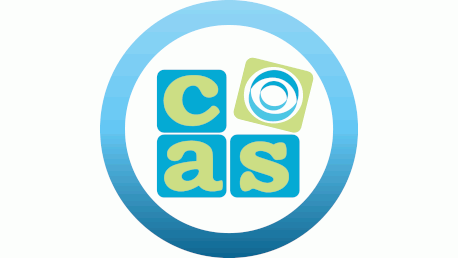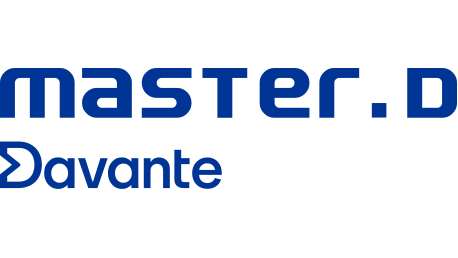Curso Certificación JSA – Certified Associate JavaScript Programmer


Si has realizado este curso, ¿por qué no darnos tu opinión?. Si lo haces, estarás ayudando a miles de personas que, como tu en su momento, están intentando cambiar su vida a través de la formación. No hay mejor ayuda, para decidirse entre miles de cursos, que la opinión de una persona que ha vivido la experiencia de cursarlo, miles de personas te lo agradecerán.
Danos tu opinión detallada sobre el Curso Certificación JSA – Certified Associate JavaScript Programmer. No olvides decirnos que te pareció el temario del curso, el profesorado, la accesibilidad al equipo del centro para resolver tus dudas y, en el caso de los programas online, la calidad del campus virtual.
El Curso Certificación JSA – Certified Associate JavaScript Programmer se imparte en modalidad semipresencial en Madrid.
OpenEDG Curso + Examen
La certificación JSA – Certified Associate JavaScript Programmer, de nivel intermedio, es una credencial profesional que demuestra la competencia de los profesionales en el análisis, el diseño y la programación orientado a objetos (OOA/OOD/OOP), así como el uso más avanzado de funciones en el lenguaje JavaScript.
El profesional certificado comprenderá el enfoque de programación orientada a objetos de JavaScript. Adquirirá la experiencia en el uso avanzado de objetos integrados, incluidos tipos de datos simples y sus constructores, tipos de datos compuestos y algunos de los objetos más útiles (JSON, Math, RegExp, extended built-in types). Será competente en el uso funciones avanzadas en JavaScript, como recursion, reenvío de llamadas, decoradores, programación funcional, generadores, iteradores y programación asíncrona, incluidas funciones de callback y promesas. Sabrá cómo adoptar las mejores prácticas, técnicas y convenciones de programación en los programas de JavaScript. Desarrollará un pensamiento algorítmico. Será capaz de analizar y modelar problemas utilizando un aparato conceptual objetivo. Comprenderá el rol y el trabajo de un programador en el proceso de desarrollo de software y sabrá cómo utilizar las herramientas de desarrollo más fundamentales.
Obtener esta certificación garantizará que el profesional está familiarizado con los medios esenciales proporcionados por el lenguaje JavaScript. Le permitirá diseñar, desarrollar, implementar, refactorizar y mantener programas y aplicaciones JavaScript, analizar y modelar problemas de la vida real en las categorías de programación orientada a objetos, crear y desarrollar su propia cartera de programación, comenzar sus propios estudios a nivel profesional y continuar su desarrollo profesional posterior.
Qué nos diferencia
-Apuesta por la certificación oficial de fabricantes.
-Oferta formativa orientada a roles y puesto de trabajo específicos.
-Metodología ""Learning by doing"" basada en la experiencia práctica del alumno en contextos reales.
-Formadores certificados con experiencia en la aplicación real de tecnologías.
Titulación: Certificación JSA – Certified Associate JavaScript Programmer
Profesor certificado OpenEDG
Documentación oficial: Certificación JSA – Certified Associate JavaScript Programmer
No existen requisitos previos para tomar este examen de certificación.
Sin embargo, es recomendable haber obtenido la Certificación JSE – Certified Entry-Level JavaScript Programmer y haber completado el Curso JavaScript Essentials 2.
Obtener la certificación JSA – Certified Associate JavaScript Programmer
Sección 1: Object-Oriented Programming - Objects
-be able to create objects using a variety of techniques, including literals, constructors and factories;
-be able to refer to object fields, including nested ones, with both dot notation and bracket notation;
-be able to alter objects as required, including by adding, deleting, and modifying properties and methods;
-know how to verify the presence of object fields, enumerate them, and influence the configuration of an object and individual fields (e.g. by blocking the possibility to modify them)
-understand that objects are stored in variables as references and know how this affects manipulating them in practice (e.g. when comparing objects)
-know what the context of a method call is and be able to use the keyword this in practice;
-understand what an object prototype is, what inheritance using a chain of prototypes is and how it can be used, for example, to modify the properties of a group of related objects.
Sección 2: Object-Oriented Programming - Classes
-be able to declare classes, including using the class expression technique, and create objects using them;
-be able to define properties both from the class methods and directly in the class body;
-understand the idea of class inheritance and be able to use it in practice;
-be able to create and use static methods and properties of classes;
-be able to define getters and setters in classes.
Sección 3: Object-Oriented Programming - Built-in Objects
-be familiar with the basic set of built-in objects of the JS language;
-understand the difference between primitive types and their corresponding wrapper objects, know the basic properties and methods of these objects, and be able to use autoboxing in practice;
-be able to handle Array data to an advanced degree, using such methods as filtering, sorting, reducing, mapping, searching, merging, etc.
-be able to use the destructuring assignment and spread operator in their work with arrays;
-know in which situations objects of the Map and Set types can be used for data storage as an alternative to Array and Object, declare them, and manipulate their elements;
-understand the JSON format and be able to convert objects and arrays to and from this format;
-be able to use the methods provided by the built-in Math object to perform basic mathematical calculations;
-be able to take advantage of basic regular expressions (using the RegExp type) to parse character strings;
-be able to extend the built-in JS types with new properties and methods.
Sección 4: Advanced Functions
-know and be able to use in practice such mechanisms related to functions as: Extended Parameter Handling (default parameter values, rest parameter, spread operator), Recursion (closure, first-class functions), Forwarding calls (apply, call, bind), Decorating functions (wrappers, higher order functions)
-understand the concept of lazy evaluation, and be able to use generators and iterators in practice;
-clearly understand when asynchronous programming techniques should be used;
-know how to use callback functions in practice to solve problems that require asynchronous operations;
-understand the Promise mechanism and be able to use it as an alternative to callback functions;
-understand the operation of the async function in conjunction with the await keyword and be able to use it to handle promises.
65 minutos
Fecha de inicio
enero, febrero, marzo, abril, mayo, junio, julio, agosto, septiembre, octubre, noviembre, diciembre

